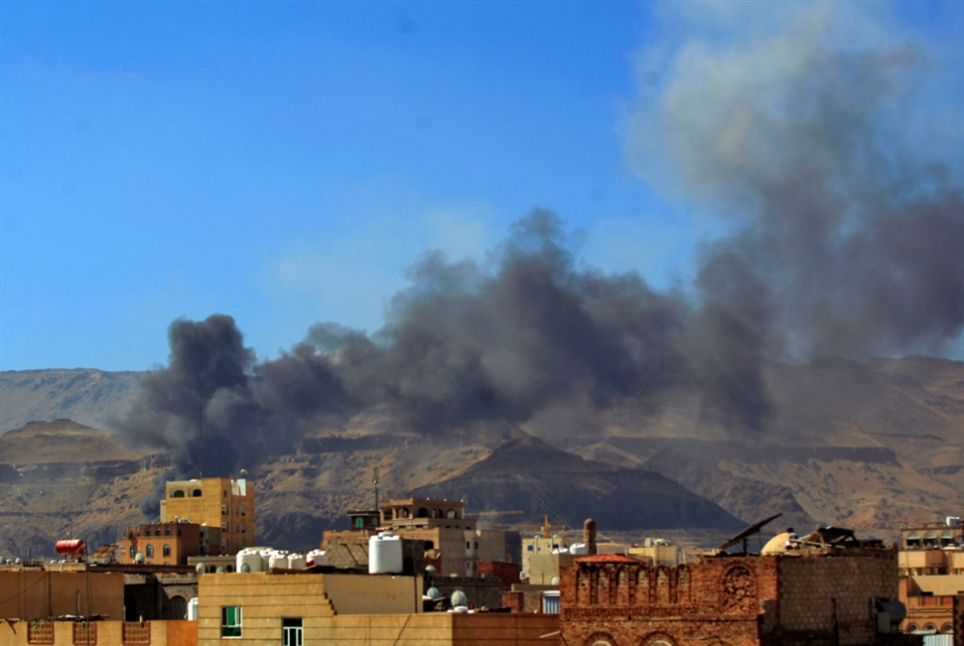
[ad_1]
Related Posts
1- American participation: Since the beginning of the war, Washington has participated in the logistical, intelligence and military support plan, and has established a joint operations room with the Saudis, as well as the planning and information exchange cell, and it has linked that system to US satellites (affiliated with the Pentagon). It also provided fighter jets with air fuel, participated in targeting the Saudi-Emirati coalition bombed, and participated in naval inspection of ships in the Arab and Red Seas. In addition, the US forces known as “Green Berets” began their work in 2017 on the border between Saudi Arabia and Yemen, where their mission focused on “search and destroy” operations related to ballistic missiles and their launchers from inside Yemen. According to military sources in Sanaa who spoke with Al-Akhbar, the size of the US empowerment of Saudi aviation, in terms of precision, day and night vision and destructive capacity, has become equal to its counterpart in the Israeli entity. What is also worth noting is that none of the arms deals concluded with Riyadh did not stop at the end of Obama’s term, despite the assertion by Congress and many human rights organizations that they are illegal. In the Trump era, the price of arms sales to Riyadh rose astronomically, reaching $ 110 billion.
Britain takes over the air side of the war in Yemen
2- British participation: the cadres of the British Royal Corps will work directly with the administration of the Saudi Arabian Military Command and Control Center, to determine the bank of bombing targets, the nature of the missions and the weapons that will be used in them, and they will coordinate with British Aviation Systems cadres to implement them, and will prepare missiles, equipment and aircraft according to the schedule agreed with the Saudis. All of this simply means that the aerial part of the war in Yemen is completely controlled by Britain: aircraft, missiles, operations management, maintenance, training and deployment, and perhaps even some fingers that fire missiles at Yemeni sites. Participation also includes software and advisors. Around 6,300 experts and advisers from the British Royal Air Force are known to be in Saudi Arabia to provide advice and training. The British government claims that these individuals are not directly involved in the war, loading weapons or planning sorties, but one of the participating officers (who declined to reveal his name) confirmed in a press interview that their work includes all sectors practical and technical, reducing the role of officers and soldiers in return. Saudis. Furthermore, British statistics indicated that British arms sales more than tripled in the period between 2012 and 2017, compared to the previous five years.
3- French participation: An investigation by the French research site Media Part revealed, a few days ago, that many French companies are training soldiers in the Saudi army, and have not stopped their activities since the beginning of the war. The report noted that Saudi Arabia used planes, armored vehicles, ships and even missiles it acquired from France in recent years in the attack. He also drew, with great discretion, on French experience to train his fighting forces in the use of French-made Caesar cannons. Likewise, the French Navy participated in the attack on the city of Hodeidah in 2018, but deliberately encapsulated its participation under the pretext of removing mines from the sea lanes around the port of Hodeidah. And in March 2016, when part of the Saudi fleet entered the French maintenance yards, French ships took their place in combat and surveillance operations under an agreement signed with the French Naval Construction Authority, by the which 39 French speedboats, delivered during the same period, entered patrol. the siege. In the same year, France completed the transfer of the $ 3 billion donation to arm the Lebanese army, scheduled for 2014, after its cancellation, for the benefit of Saudi operations in Yemen. In 2017, Riyadh delivered the equivalent of 1,400 million euros in arms, a figure that exceeds the already high sales of previous years (1,000 million in 2016, 900 million euros in 2015).
Subscribe to «News» on YouTube here